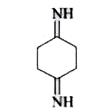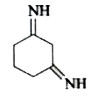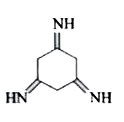Which of the following is least stable
NH+4
SbH+4
PH+4
AsH+3
To determine which of the given hydrides (NH4+, SbH4+, Ph4+, and AsH4) is the least stable, we can analyze the stability of these compounds based on their position in Group 15 of the periodic table and the factors affecting bond stability.
1. Identify the Group 15 Elements:
The elements in Group 15 include nitrogen (N), phosphorus (P), arsenic (As), antimony (Sb), and bismuth (Bi). The hydrides we are considering are NH4+ (ammonium), SbH4+ (antimony hydride), Ph4+ (which is not a standard hydride but can be assumed to refer to a hypothetical phosphorus hydride), and AsH4 (arsenic hydride).
2. Understand Stability Trends in Group 15:
As we move down the group from nitrogen to bismuth, the stability of the hydrides generally decreases. This trend is primarily due to the increase in atomic size, which leads to weaker bonds (lower bond dissociation energy) between the central atom and hydrogen.
3. Analyze Each Hydride:
- NH4+ (Ammonium): This hydride is very stable due to the small size of nitrogen and strong N-H bonds.
- AsH4 (Arsenic Hydride): Arsenic is larger than nitrogen, leading to weaker As-H bonds compared to N-H bonds, but it is still relatively stable.
- SbH4+ (Antimony Hydride): Antimony is even larger than arsenic, resulting in even weaker Sb-H bonds, making it less stable than AsH4.
- Ph4+ (Hypothetical Phosphorus Hydride): Assuming this refers to a phosphorus hydride, it would be more stable than SbH4+ but less stable than NH4+.
4. Conclusion:
Based on the analysis, SbH4+ (antimony hydride) is the least stable among the given options due to the larger size of the antimony atom leading to weaker bonds compared to the other hydrides.
Final Answer:
The least stable hydride among the options given is SbH4+.
---
The elements in Group 15 include nitrogen (N), phosphorus (P), arsenic (As), antimony (Sb), and bismuth (Bi). The hydrides we are considering are NH4+ (ammonium), SbH4+ (antimony hydride), Ph4+ (which is not a standard hydride but can be assumed to refer to a hypothetical phosphorus hydride), and AsH4 (arsenic hydride).
As we move down the group from nitrogen to bismuth, the stability of the hydrides generally decreases. This trend is primarily due to the increase in atomic size, which leads to weaker bonds (lower bond dissociation energy) between the central atom and hydrogen.
- NH4+ (Ammonium): This hydride is very stable due to the small size of nitrogen and strong N-H bonds.
- AsH4 (Arsenic Hydride): Arsenic is larger than nitrogen, leading to weaker As-H bonds compared to N-H bonds, but it is still relatively stable.
- SbH4+ (Antimony Hydride): Antimony is even larger than arsenic, resulting in even weaker Sb-H bonds, making it less stable than AsH4.
- Ph4+ (Hypothetical Phosphorus Hydride): Assuming this refers to a phosphorus hydride, it would be more stable than SbH4+ but less stable than NH4+.
Based on the analysis, SbH4+ (antimony hydride) is the least stable among the given options due to the larger size of the antimony atom leading to weaker bonds compared to the other hydrides.
The least stable hydride among the options given is SbH4+.
Topper's Solved these Questions
- HYDROCARBONSBOOK - AAKASH INSTITUTE ENGLISHCHAPTER - HYDROCARBONSEXERCISE - ASSIGNMENT SECTION-A COMPETITION LEVEL DIFFER BY
50 Videos
- HYDROCARBONSBOOK - AAKASH INSTITUTE ENGLISHCHAPTER - HYDROCARBONSEXERCISE - SECTION-B OBJECTIVE TYPE QUESTIONS (ONE OPTION IS CORRECT)
25 Videos
- HYDROCARBONSBOOK - AAKASH INSTITUTE ENGLISHCHAPTER - HYDROCARBONSEXERCISE - Assignment(Section - C) (Previous Years Questions)
60 Videos
- HALOALKANES AND HALOARENES BOOK - AAKASH INSTITUTE ENGLISHCHAPTER - HALOALKANES AND HALOARENES EXERCISE - ASSIGNMENT SECTION -D
15 Videos
- HYDROGENBOOK - AAKASH INSTITUTE ENGLISHCHAPTER - HYDROGENEXERCISE - ASSIGNMENT (SECTION - D) (Assertion-Reason Type question)
15 Videos
Similar Questions
Knowledge Check
Which of the following is the least stable?
A B
B C
C D
D
Which of the following is most stable Carbocation?
View SolutionWhich of the following is most stable conformer?
View SolutionWhich of the following is most stable carbocation?
View SolutionWhich of the following is most stable complex ?
View SolutionWhich of the following is most stable ecosystem ?
View SolutionWhich of the following is the least stable?
View SolutionWhich of the following is the least stable carbanion?
View Solution